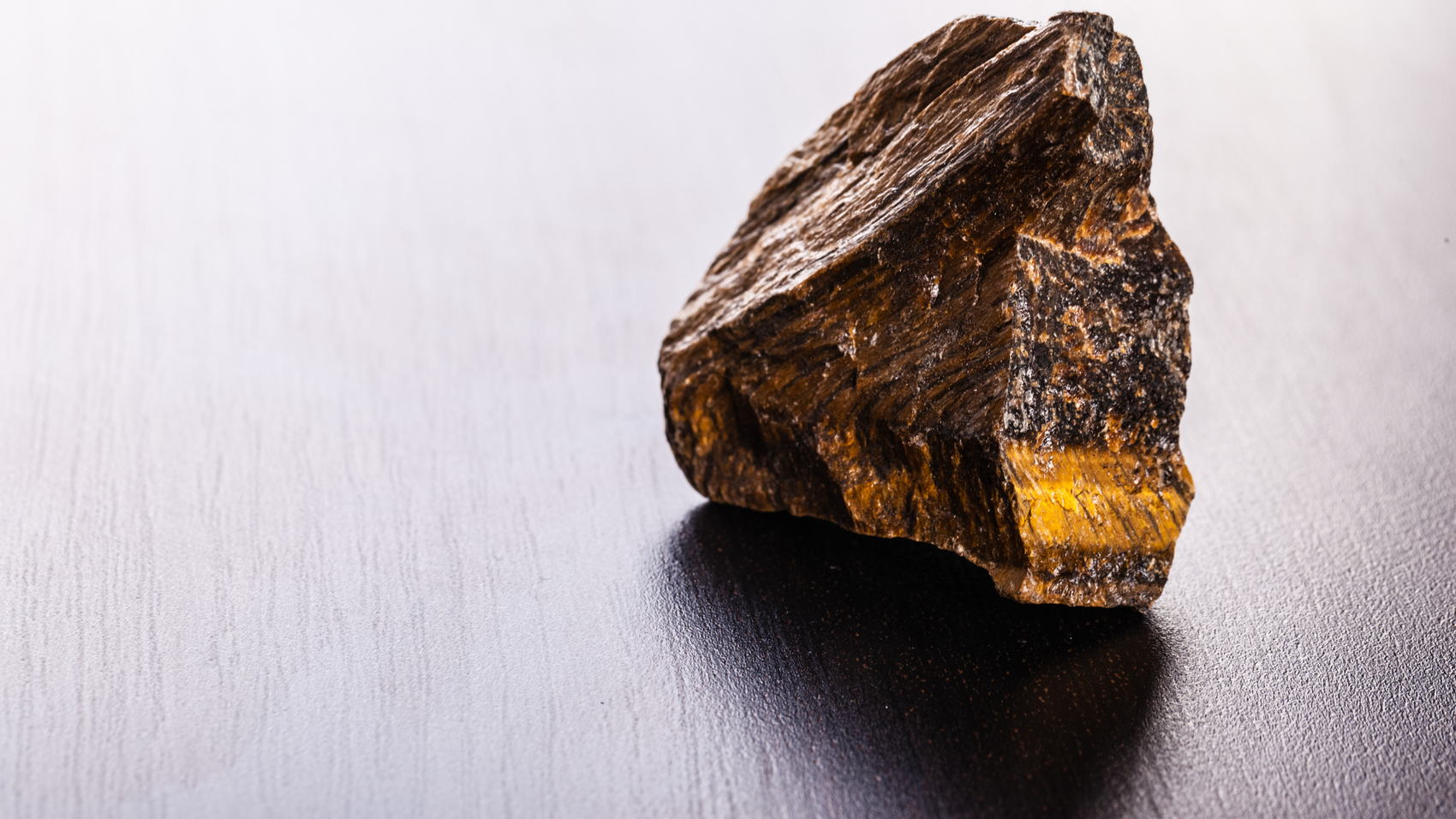Tiger's Eye: A Closer Look at the Golden Gemstone of Courage and Protection
Tiger's Eye is a captivating gemstone known for its golden-brown color and unique chatoyancy. It has been revered for centuries for its association with courage, protection, and confidence. Let's take a closer look at the formation, properties, uses, mining, and cultural significance of this remarkable gemstone.
Key Takeaways
- Tiger's Eye is a form of quartz with a fibrous structure that gives it its distinctive chatoyant appearance.
- The geological formation of Tiger's Eye involves the alteration of crocidolite by silica, resulting in the formation of quartz fibers.
- Tiger's Eye exhibits a range of colors including golden-brown, red, and blue, with the golden-brown variety being the most well-known.
- The physical properties of Tiger's Eye include a Mohs hardness of 6.5-7.0 and a specific gravity of 2.64-2.71, making it suitable for jewelry and decorative uses.
- Metaphysically, Tiger's Eye is believed to promote courage, protection, and good fortune, making it a popular choice for healing and spiritual practices.
Formation of Tiger's Eye
Mineral Composition
The mineral composition of Tiger's Eye primarily consists of quartz and parallel fibers of crocidolite. This unique combination results in the striking chatoyancy, or 'cat's eye' effect, characteristic of Tiger's Eye. The table below provides a breakdown of the mineral composition:
| Mineral | Percentage |
|---|---|
| Quartz | 50-75% |
| Crocidolite | 25-50% |
Additionally, the geological formation of Tiger's Eye involves the alteration of crocidolite into quartz, a process known as pseudomorphosis. The color variations of Tiger's Eye, ranging from golden brown to red-brown, are attributed to the iron oxide content and the degree of oxidation during formation.
Geological Formation
Tiger's Eye is formed through a process known as pseudomorphism, where one mineral transforms into another while retaining the original structure. The primary mineral responsible for this transformation is crocidolite, a type of asbestos. Over time, the crocidolite fibers are replaced by quartz, resulting in the distinct golden-brown color and shimmering chatoyancy of Tiger's Eye. This unique transformation gives Tiger's Eye its mesmerizing appearance and metaphysical properties.
| Mineral | Transformation |
|---|---|
| Crocidolite | Quartz |
- Pseudomorphism is a fascinating phenomenon where minerals undergo a complete change in composition and structure, while maintaining the external form.
The geological formation of Tiger's Eye showcases the remarkable resilience and adaptability of natural materials, culminating in the creation of a captivating and protective gemstone.
Color Variations
Tiger's Eye exhibits a range of color variations, including golden brown, red, and blue. The color variations are due to the presence of different mineral inclusions. These inclusions create a chatoyant effect, giving the stone a unique and mesmerizing appearance. The table below illustrates the color variations and their corresponding mineral inclusions.
| Color Variation | Mineral Inclusion |
|---|---|
| Golden Brown | Iron Oxide |
| Red | Hematite |
| Blue | Crocidolite |
The chatoyant effect of Tiger's Eye is highly prized in jewelry and decorative items. Its metaphysical properties are also associated with protection and courage. This makes Tiger's Eye a sought-after gemstone for both its beauty and its protective qualities.
Properties and Uses
Physical Properties
Tiger's Eye exhibits chatoyancy, a unique optical phenomenon that gives the gemstone a captivating sheen. Its physical properties include a hardness of 6.5-7 on the Mohs scale and a specific gravity of 2.64-2.71. The mineral composition consists mainly of quartz and tiger's iron, resulting in the distinctive golden to reddish-brown color. Here is a table summarizing the physical properties:
| Property | Value |
|---|---|
| Hardness | 6.5-7 |
| Specific Gravity | 2.64-2.71 |
| Composition | Quartz, Tiger's Iron |
Tiger's Eye is believed to have metaphysical properties that promote courage, protection, and clarity of intention. Its use in jewelry and decorative items has been associated with a sense of empowerment and strength. The gemstone's allure and symbolism make it a popular choice for those seeking a blend of elegance and spiritual significance.
Metaphysical Properties
*Tiger's Eye is believed to possess powerful metaphysical properties that promote balance and harmony. It is often associated with the solar plexus chakra, where it is thought to enhance one's confidence and courage. The stone is also believed to provide protection and bring about a sense of stability and security. In metaphysical practices, Tiger's Eye is used for grounding and promoting a sense of inner strength.
| Metaphysical Properties | Description |
|---|---|
| Balance and Harmony | Promotes balance and harmony in life |
| Solar Plexus Chakra | Enhances confidence and courage |
| Protection | Provides protection and security |
| Grounding | Promotes a sense of inner strength |
Jewelry and Decorative Uses
Tiger's Eye is highly valued for its use in jewelry and decorative items. Its distinctive chatoyancy makes it a popular choice for cabochons and beads. The unique golden-brown color and silky luster of Tiger's Eye make it a sought-after gemstone for statement jewelry and ornamental carvings. In addition to jewelry, Tiger's Eye is also used in decorative objects such as bookends, vases, and sculptures. The versatility and aesthetic appeal of Tiger's Eye make it a favorite among artisans and designers.
Tiger's Eye is believed to bring courage and protection, making it a meaningful choice for personal adornment and home decor.
| Types of Jewelry | Description |
|---|---|
| Rings | Popular choice for men's and women's jewelry. |
| Necklaces | Often used in statement necklaces and pendants. |
| Bracelets | Fashionable accessory for both casual and formal wear. |
Mining and Sourcing
Global Deposits
Tiger's Eye is primarily mined in South Africa, Australia, and India. The deposits are known for their rich golden-brown and reddish-brown colors, which are highly sought after in the gemstone market. These deposits are often found in areas with significant mineral composition, such as iron oxide and silica. The mining of Tiger's Eye requires careful extraction and processing to preserve its natural beauty and integrity.
| Country | Deposits |
|---|---|
| South Africa | Rich golden-brown |
| Australia | Reddish-brown |
| India | Varied colors |
- Ethical sourcing practices are essential to ensure the well-being of local communities and the environment.
The unique geological formation of Tiger's Eye deposits contributes to their exceptional quality and distinct color variations.
Ethical Sourcing Practices
Ethical sourcing of Tiger's Eye is a critical aspect of the gemstone industry. It involves ensuring that the mining and extraction processes adhere to ethical labor practices and environmental regulations. This often requires close collaboration with local communities and governments to uphold fair trade principles. The table below illustrates the key considerations in ethical sourcing practices:
| Consideration | Description |
|---|---|
| Labor Conditions | Ensuring fair wages and safe working conditions |
| Environmental Impact | Minimizing ecological harm and promoting sustainability |
Ethical sourcing not only benefits the workers and the environment but also enhances the reputation of the gemstone in the market.
Environmental Impact
The mining of Tiger's Eye can have significant environmental impact, particularly in areas with fragile ecosystems. This includes habitat destruction, soil erosion, and water pollution. Ethical sourcing practices are crucial to minimize the negative impact on the environment. A responsible approach to mining and sourcing is essential to protect the natural habitats and ensure the sustainable future of this precious gemstone.
"The environmental impact of mining activities can have far-reaching consequences on the delicate balance of ecosystems, and it is imperative to prioritize sustainable practices for the preservation of natural resources."
| Environmental Impact Factors | Description |
|---|---|
| Habitat Destruction | Loss of natural habitats due to mining activities |
| Soil Erosion | Degradation of soil quality and stability |
| Water Pollution | Contamination of water bodies from mining waste |
Conclusion
Significance and Symbolism
Tiger's Eye holds great symbolism and significance in various cultures. In ancient times, it was believed to provide courage and protection to the wearer. The stone's unique chatoyancy reflects light in a way that resembles the eyes of a tiger, adding to its mystique. The table below showcases the cultural significance of Tiger's Eye in different regions around the world.
| Region | Symbolism |
|---|---|
| Africa | Strength and Confidence |
| India | Insight and Clarity |
- The protective nature of Tiger's Eye is revered in many traditions, where it is often used as a talisman or amulet for protection and good fortune.
Tiger's Eye is a reminder to embrace one's inner strength and face challenges with courage and determination.
Cultural Significance
The Tiger's Eye holds great cultural significance in various ancient civilizations, where it was revered for its protective and courageous properties. In many cultures, it was believed to provide strength and confidence to the wearer, making it a popular choice for warriors and leaders. The gemstone's unique appearance and symbolism have made it a cherished item in traditional art and jewelry. Below is a table showcasing the cultural significance of Tiger's Eye in different cultures:
| Culture | Symbolism |
|---|---|
| Egyptian | Protection |
| Roman | Bravery |
| Chinese | Prosperity |
Future Prospects
The future prospects of Tiger's Eye are promising, with a growing demand for healing crystals and spiritual jewelry. As consumers increasingly seek natural and meaningful products, the metaphysical properties of Tiger's Eye make it a sought-after gemstone. Furthermore, the ethical sourcing practices and emphasis on environmental sustainability are positioning Tiger's Eye as a responsible choice for conscious consumers.
| Prospects | Details |
|---|---|
| Market Demand | Growing interest in healing crystals and spiritual jewelry |
| Ethical Sourcing | Emphasis on ethical practices and environmental sustainability |
- Continued growth in market demand
- Expansion of ethical sourcing practices
The future of Tiger's Eye looks bright, with its unique blend of beauty, symbolism, and ethical value paving the way for sustainable growth and appreciation.
Frequently Asked Questions
What is Tiger's Eye?
Tiger's Eye is a golden-brown gemstone known for its chatoyant appearance, which resembles the eye of a tiger.
How is Tiger's Eye formed?
Tiger's Eye is formed through a process of replacement where crocidolite is gradually replaced by quartz, resulting in the formation of parallel fibers that give the stone its unique appearance.
What are the metaphysical properties of Tiger's Eye?
Tiger's Eye is believed to possess metaphysical properties such as protection, courage, and grounding. It is often used in crystal healing and spiritual practices.
Is Tiger's Eye suitable for jewelry?
Yes, Tiger's Eye is commonly used in jewelry making due to its attractive appearance and durability. It is often crafted into beads, cabochons, and other decorative pieces.
Where is Tiger's Eye mined?
Tiger's Eye is mined in various locations around the world, including South Africa, Australia, India, and the United States.
What is the cultural significance of Tiger's Eye?
Tiger's Eye has cultural significance in many ancient civilizations and is often associated with bravery, protection, and good fortune.




